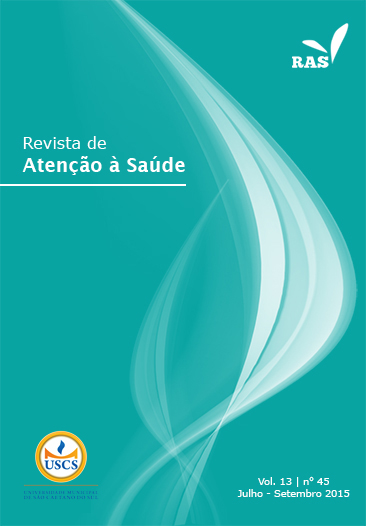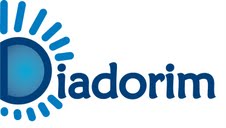EFFECTS OF AN AQUATIC PHYSICAL THERAPY INTERVENTION IN PATIENTS AFTER STROKE
DOI:
https://doi.org/10.13037/ras.vol13n45.2838Keywords:
Stroke, hydrotherapy, rehabilitationAbstract
Introduction: The stroke is caused by the obstruction or rupture of one or more arteries causing lack ofblood circulation in the brain. As consequences there are motor injuries, sensory, cognitive, communicativeand emotional. Objectives: Analyze the effects of an aquatic physiotherapy intervention in stroke patients.Materials and Methods: Six patients with a diagnosis of stroke were selected and submitted to 18 sessionsof aquatic therapy. The evaluation was done before and after the intervention with the questionnaireStroke Specific Quality of Life Scale (SS-QOL) to assess the quality of life, the Test of 6-minute walk,to assess the functional capacity and the Walk Test of 10 meters to measure gait speed. Results: Sixpatients participated in the study with an average age of 58.7 ± 7.7 years, average time after stroke of 5.7± 4.2 years. Significant values were obtained in all variables. Quality of life (SS-QOL) average was 163points in pre-intervention and in post-intervention in 185.7. The 10-meter walk test (10MWT) averagewas 25 seconds in pre-intervention, and in post-intervention was 13 seconds. The 6-minute walk test(6MWT) average was 214.7 meters in distance pre-intervention, and post-intervention was 161 meters.Conclusions: Aquatic physical therapy protocol applied in post-stroke patients resulted in an increase inquality of life, gait speed, and functional capacity of these individuals.Downloads
References
1. Barros LA, Passos NRS, Nunes MASN. Breve estudo do estado da arte sobre acidente vascular cerebral e serious games para aplicação no projeto “AVC” do núcleo de tecnologia assistida da UFS. Rev Geitec. 2013;3:129-43.
2. Giles MF. Rothwel, P.M. Measuring the prevalence of stroke. Neuroepidemiology. 2008 Apr 18;30(4):205-6.
3. Cruz KC, Diogo MJ. Evaluation of functional capacity in elders with encephalic vascular accident. Acta Paul Enferm. 2009;22(5):666-72.
4. André C. Manual de AVC. 2ª ed. Rio de Janeiro: Revinter; 2005.
5. Ryerson SD. Hemiplegia. In: Umphred DA. Reabilitação neurológica. São Paulo: Manole; 2004. 59-136.
6. Nunes LCBG. Efeitos da eletroestimulação neuromuscular no músculo tibial anterior de pacientes hemiparéticos espásticos [Dissertação]. Campinas: Universidade Estadual de Campinas; 2004.
7. Moura RMF, Lima RCM, Lage DC, Amaral EAA. Efeitos do treinamento aeróbio na qualidade de vida e na capacidade funcional de indivíduos hemiparéticos crônicos. Rev Acta Fisiátr. 2005;12(3):94-99.
8. Oliveira RJ. Atividade física e doença cerebrovascular. Rev Bras Ci e Mov. 2001; 9(3):65-78.
9. Benvegnu AB, Gomes L A, Souza CT, Cuadros TBB, Pavão LW, Ávila SN. Avaliação da medida de independência funcional de indivíduos com sequelas de Acidente Vascular Encefálico (AVE). Rev Bras Ciênc Saúde. 2008 Jul/Dez;1(2):71-7.
10. Torriani C, Queiroz SS, Cyrillo FN, Roxo R, Zancani R, Macari R. Enfaixamento em oito como recurso fisioterapêutico para o recrutamento muscular dos dorsiflexores durante a marcha. Rev Fisioter Mov 2007 Out/Dez;20(4):31-41.
11. Ovando AC, Michaelsen SM, Dias JA, Herber V. Treinamento de marcha cardiorrespiratório e muscular após acidente vascular encefálico: estratégias, dosagens e desfechos. Rev Fisioter Mov 2010 Abr/Jun;23(2):253-69.
12. Mackay-Lyons MJ, Makrides L. Longitudinal changes in exercise capacity after stroke. Arch Phys Med Rehabil. 2004 Oct; 85(10):1608-12.
13. Mehrholz J, Kugler J, Pohl M. Water-based exercises for improving activities of daily living after stroke. Cochrane Database Syst Rev. 2011 Jan 19;(1).
14. Lazzareschi L. Avaliação da reabilitação da marcha em pacientes acometidos por acidente vascular encefálico isquêmico (AVEi). São Paulo: Universidade Cruzeiro do Sul; 2010.
15. Degani AM. Hidroterapia: os efeitos físicos, fisiológicos e terapêuticos da água. Rev Fisioter Mov. 1998 Abr/ Set;11(1):93-105.
16. Noh DK, Lim JY, Shin H, Paik NJ. The effect of aquatic therapy on postural balance and muscle strength in stroke survivors. A randomized controlled pilot trial. Clin Rehabil. 2008 Out/Nov;22:966-76.
17. Teixeira-Salmela LF, Lima RCM, Souza AC, Goulart F. Mudanças na qualidade de vida associadas ao treinamento de hemiplégicos em academias. Rev Fisioter Mov 2006 Jul/ Set; 19(3):75-82.
18. Tanne D, Tsabari R, Chechik O, Toledano A, Orion D, Schwammenthal et al. Improved exercise capacity in patients after minor ischemic stroke undergoing a supervised exercise training program. Rev Imaj. 2008 Feb;10:113-16.
19. Veronezi AMG, Bachiega GL, Augusto VS, Carvalho AC. Avaliação da performance da marcha de pacientes hemiplégicos do projeto hemiplegia. Rev Fisioter Mov 2004 Jan/ Mar; 17(1):31-38.
20. Williams LS, Weinberger M, Harris LE, Clark DO, Biller J. Development of a stroke-specific quality of life scale. Stroke. 1999 Jul;30(7):1362-69.
21. Santos, A.S. Questionário específico de avaliação da qualidade de vida em pacientes portadores de doença cerebrovascular do tipo isquêmica: tradução e adaptação cultural para a língua portuguesa falada no Brasil [Dissertação]. Florianópolis: Universidade Federal de Santa Catarina; 2000.
22. Guilhermin F, Bombardier CL, Beaton D. Cross-cultural adaptation of health-related quality of life measures: literature review and proposed guidelines. J Clin Epidemiol. 1993 Dec;46:1417-32.
23. Salbach NM, Mayo NE, Higgins J, Ahmed S, Finch LE, Richards CL. Responsiveness and predictability of gait speed and other disability measures in acute stroke. Arch Phys Med Rehabil. 2001;82(9):1204-12.
24. Green J, Forster A, Young J. Reliability of gait speed measured by a timed walking test in patients one year affter stroke. Clin Rehabil. 2002;16:306-14.
25. American Thoracic Society Statement: Guideline for the six-minute walk test. J Respir Crit Care Med. 2002;7(166):111.
26. Roesler R, Henriques JA, Schwartsmann G. Gastrinreleasing peptide receptor as a moleculartarget for psychiatric and neurological disorders. CNS Neurol Disord Drug Targets. 2006;5(2):197-204.
27. Schuster RC, Polese JC, Silva SLA, Perin V, Seben YP. Caracterização de internações hospitalares por acidente vascular encefálico na cidade de Passo Fundo – RS. ConsSaúde. 2009;8(4):581-5.
28. Rodrigues JE, Sá MS, Alouche SR. Perfil dos pacientes acometidos por AVE tratados na clínica escola de fisioterapia da
UMESP. Rev Neurociênc. 2004;12(3):117-22.
29. Falcão IV, Carvalho EMF, Barreto KML, Lessa FJD, Leite VMM. Acidente vascular cerebral precoce: implicações para adultos em idade produtiva atendidos pelo Sistema Único de Saúde. Rev Bras Saúde Mater Infant. 2004;4(1):95-101.
30. Bousser MG. Stroke in women. Circulation. 1999;99:463-7.
31. Nunes S, Pereira C, Silva MG. Evolução funcional de utentes após AVC nos primeiros seis meses após a lesão. Ess Fisi Online. 2005;1(3):3-20.
32. Nicolini RD, Dieter EH, Haas L. Programa de hidroterapia no movimento de dorsiflexão de indivíduos hemiparéticos espásticos. Fisioter Bras. 2010;11(1):34-9.
33. Carvalho AC, Vanderlei LCM, Bofi TC, Pereira JDAS, Nawa VA. Projeto Hemiplegia – Um modelo de fisioterapia em grupo para hemiplégicos crônicos. Arq Ciênc Saúde. 2007 Jul/Set;14(3):161-8.
34. Scalzo PL, Zambaldi PA, Rosa DA, Souza DS, Ramos TX, Magalhães V. Efeito de um treinamento específico de equilíbrio em hemiplégicos crônicos. Rev Neurocienc. 2011; 19(1):90-7.
35. Py MO, Freitas EV, Py L, Neri AL, Cançado FAX, Gorzoni M, et al. Doenças cerebrovasculares. In: Tratado de geriatria e gerontologia. Rio de Janeiro: Guanabara Koogan; 2002.
36. Pires SL, Gagliardi RJ, Gorzoni MR. Estudo da frequência dos principais fatores de risco para acidente vascular isquêmico em idosos. Arq Neuropsiquiatr. 2004;62(3):844-51.
37. Saposnik G, Delbrutto OH. Stroke in South América: a systematic review of incidence, prevalence and stroke subtypes. Stroke. 2003;34:2103-8.
38. Silva SM, Corrêa FI, Faria CDCM, Corrêa JCF. Comparacão entre instrumentos de qualidade de vida para avaliacao da participacao após AVE conforme a classificação internacional de funcionalidade, incapacidade e saude (CIF). Braz J Phys Ther. 2013 Set/Out;17(5):470-8.
39. Voos MC, Valle LER. Estudo comparativo entre a relação do hemisfério acometido no acidente vascular encefálico e a evolução funcional em indivíduos destros. Rev Bras Fisioter. 2008;12(2):113-20.
40. Nobre MRC. Qualidade de vida. Arq Bras Cardiol 1995;67:14-9.
41. Gorenstein C, Andrade LH. Beck depression inventory: psychometric properties of the portuguese version. Rev Psiquiatr Clin. 1998;25(5):245-50.
42. Franciulli PM. Comparação dos efeitos do treinamento aeróbio em piscina e esteira rolante na marcha hemiparética de indivíduos acometidos por acidente vascular cerebral. [Dissertação]. São Paulo: Universidade de São Paulo; 2013.
43. Costa AM, Duarte E. Atividade física e a relação com a qualidade de vida, de pessoas com seqüelas de acidente vascular cerebral isquêmico (AVCI). Rev Bras Ciên e Mov. 2002;10(1).
44. Driver S, Rees K, O’Connor J, Lox C. Aquatics, health-promoting self-care behaviours and adults with brain injuries. Brain injury. 2006 Fev;20(2):133-41.
45. Bohannon RW, Larkin PA, Smith MB, Horton MG. Relationship between static muscle strength deficits and spasticity in stroke patients with hemiparesis. Phys Ther. 1987; 67:1068-71.
46. Jakaitis F. Reabilitação e terapia aquática – aspectos clínicos e práticos de tratamento. São Paulo: Roca; 2007.
47. Biasoli MC, Machado CMC. Hidroterapia: aplicabilidades clínicas. Rev Bras Med 2006 Maio;63(5).
48. Scalzo PL, Zambaldi PA, Rosa DA, Souza DS, Ramos TX, Magalhães V. Efeito de um treinamento específico de equilíbrio em hemiplégicos crônicos. Rev Neurociênc. 2011; 19(1):90-7.
49. Mota RS, Bitencourt JS, Conceição TMA, Cardoso FB, Silva IL, Beresford H. Avaliação do efeito do exercício aeróbico na marcha de indivíduos hemiparéticos. Rev Bras Ci e Mov. 2011;19(2):45-51.
50. Macko RF, Benvenuti F, Stanhope S, Macellari V, Taviani A, Nesi B, et al. Adaptive physical activity improves mobility function and quality of life in chronic hemiparesis. JRRD 2008;45:323-8.
51. Potempa K, Lopez M, Braun L, Szidon P, Fogg L. Tineknell T physiological outcomes of aerobic exereise training in hemiparetie stroke patients. Stroke. 1995;26:1015.
52. Redelmeier DA, Bayoumi AM, Golstein RS, Guyatt GH. Interpreting small differences in functional status: the six minute walk test in chronic lung disease patients. Am J Respir Crit Care Med. 1997;155(4):1278-82.
53. Wise RA, Brown CD. Minimal clinically important differences in the six-minute walk test and the incremental shuttle walking test. COPD. 2005;2(1):125-9.
54. Nascimento LR, Caetano LCG, Freitas DCMA, Morais TM, Polese JC, Teixeira-Salmela LF. Different intructions during the tem-meter walking test determined significant increases in maximum gait speed in individuals with chronic hemiparesis. Rev Bras Fisioter. 2012 Mar;15(1).
55. Parvataneni K, Olney SJ, Brouwer B. Changes in muscle group work associated with changes in gait speed of persons with stroke. Clinical biomechanics. Bristol, Avon. ago. 2007; 22(7):813-20.
56. Dean CM, Richards CL, Malouin F. Walking speed over 10 metres overestimates locomotor capacity after stroke. Clin Rehabil. 2001;15:415-21.
Downloads
Published
Issue
Section
License
Copyright (c) 2015 Maira Tonieto, Priscila Rama, Rodrigo Costa Schuster, Alexandra Renosto

This work is licensed under a Creative Commons Attribution-NonCommercial-NoDerivatives 4.0 International License.
Policy Proposal for Journals offering Free Delayed Access
Authors who publish in this magazine agree to the following terms:
- Authors maintain the copyright and grant the journal the right to the first publication, with the work simultaneously licensed under a Creative Commons Attribution License after publication, allowing the sharing of the work with recognition of the authorship of the work and initial publication in this journal.
- Authors are authorized to assume additional contracts separately, for non-exclusive distribution of the version of the work published in this magazine (eg, publishing in institutional repository or as a book chapter), with the acknowledgment of the authorship and initial publication in this journal.
- Authors are allowed and encouraged to publish and distribute their work online (eg in institutional repositories or on their personal page) at any point before or during the editorial process, as this can generate productive changes, as well as increase impact and citation of the published work (See The Effect of Open Access).









